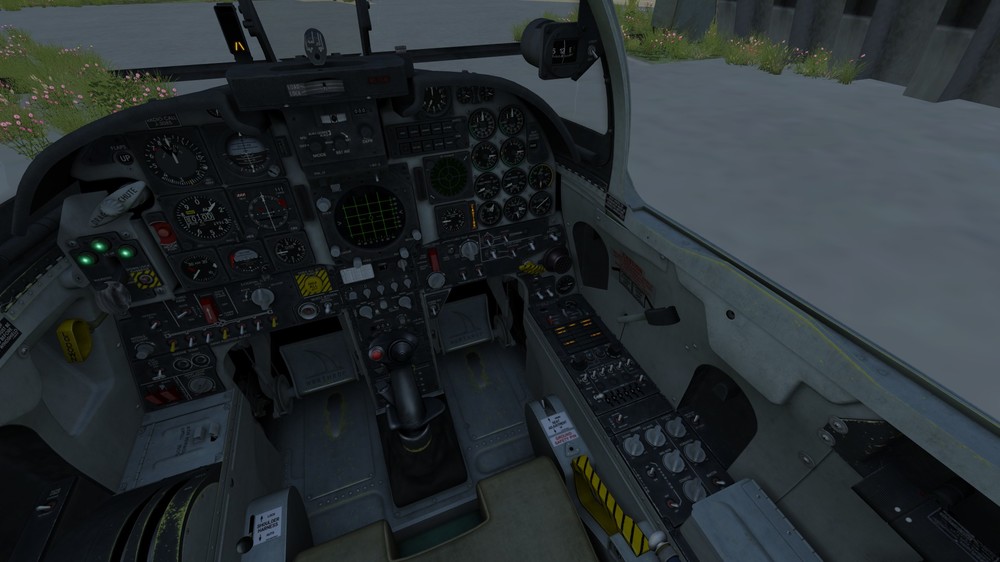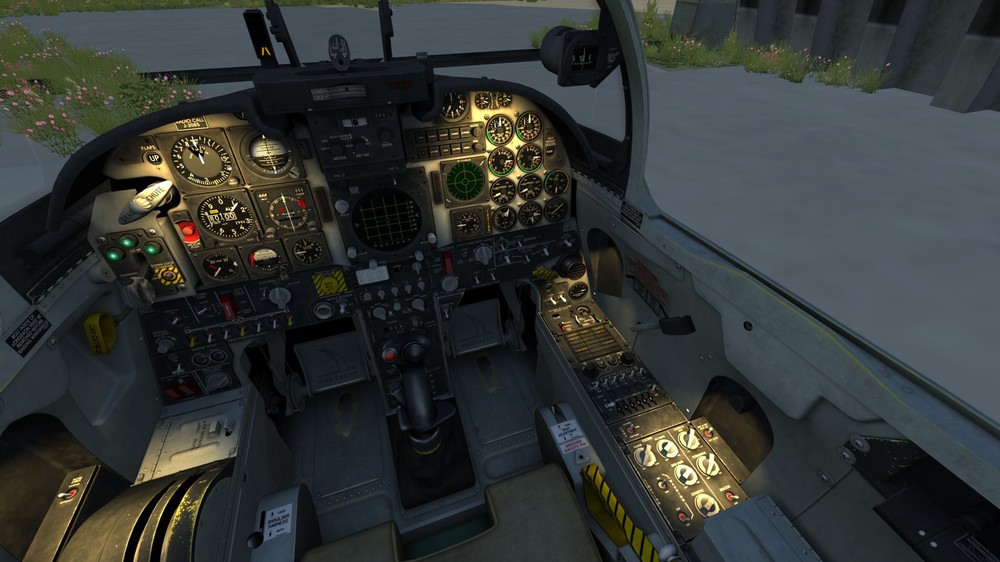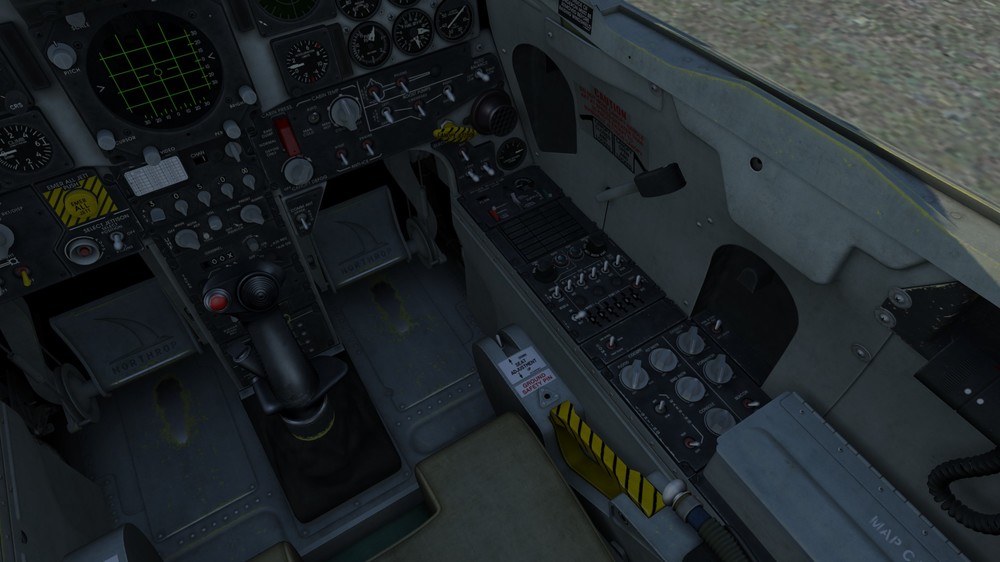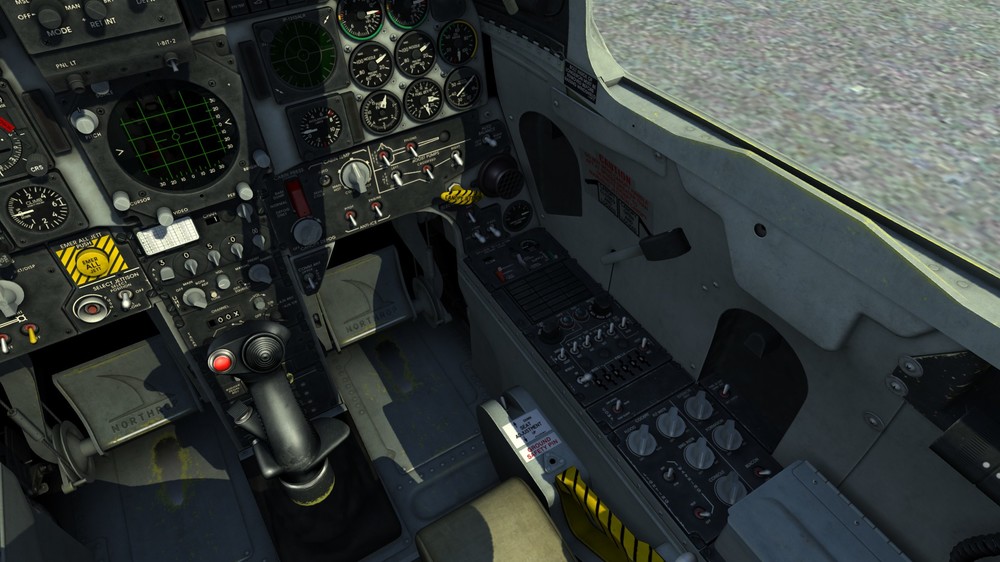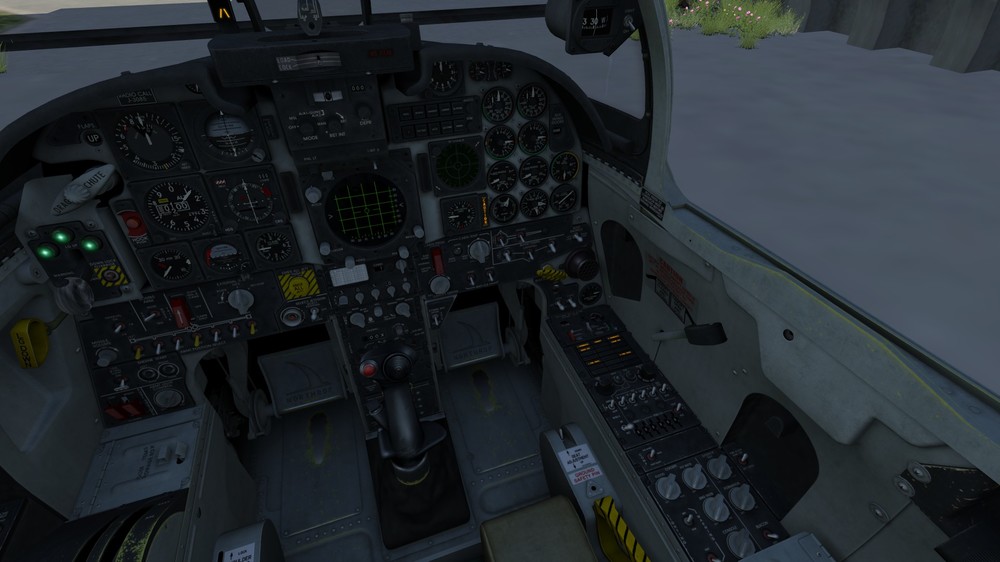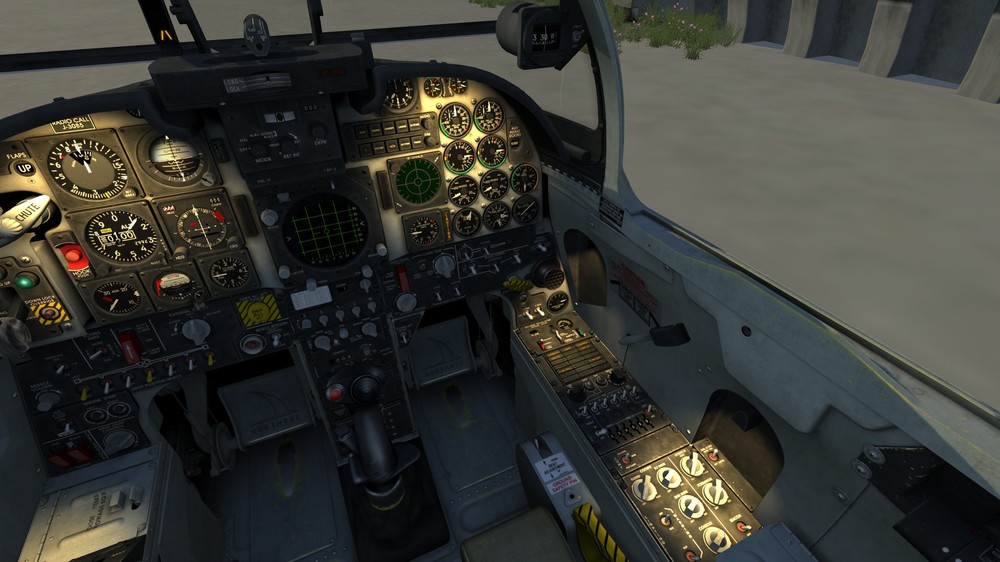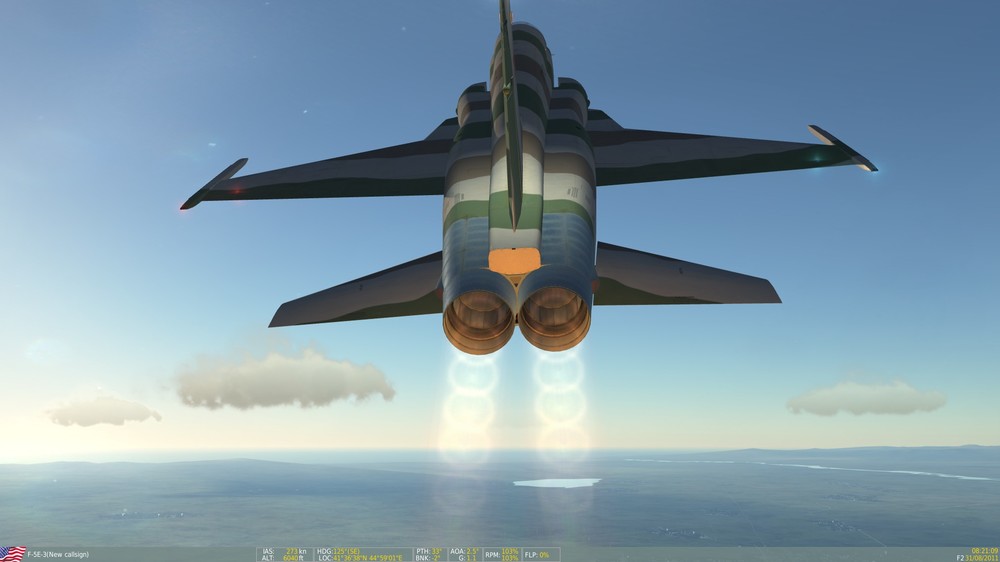-
Posts
544 -
Joined
-
Last visited
-
Days Won
1
Content Type
Profiles
Forums
Events
Everything posted by El Hadji
-
I think it is by design... Similar switch covers behave exactly the same way in the F-86. When the switch is flipped the covers can't be closed. The cover is there to prevent accidental activation of guns and missiles. When they are activated there is no need for a cover. But then again, I'm no expert so I could very well be wrong.
-
I forgot to mention when I posted that screenshot that the end piece of the arrestor hook also gets the same illumination.
-
It feels more unrealistic to me... The view upwards is heaviliy limited now which makes eyballing ground targets in a turn difficult just to mention one problem. IRL I have both Mk I Neck and Mk I Eyeballs to help me look around. With the new TiR functionality my field of view is way too limited. Do not like it all all.
-
Some info I have about the "pile of leaves" camouflage that might interest some here: The pattern is often referred to as the "Viggen camouflage" in Sweden but it should be referred to as the "Bulldog camouflage" instead since the SK61 Bulldog was the first aircraft to get this paint scheme in 1972. The use of the four color, splinter camouflage began in the late 1960's and the more official name of the pattern is "FOA-kamouflage". FOA (Försvarets forskingsanstalt) was the Swedish Defense Research Agency which today is called FOI. Ground vehicles where the first to get the new paint. The pattern should consist of: 30% black (093M) 30% dark green (326M) 34% light green (322M) 6% brown (507M) From 1978 and ownard all new vehicles were delivered coated in the dark green and the rest of the colors where added afterwards. Below is the "Anvisningar mönstermålning" (Instructions for pattern painting): [ame]http://www.klabbe.eu/manualer/Anvisningarformonstermalning.pdf[/ame] As already mentioned, the SK61 Bulldog was the first aircraft to receive the pattern. Aircraft no 61061 was the very first. A few J35 Drakens were painted for test purposes. Aircraft #35220 was the first flyable. A Draken without a working engine had been the very first. The first Draken (EDIT: thanx to Mattebubben for noticing my typo) to be painted in the new splinter camo was prototype 35-7 in the summer of 1972. This aircraft was destroyed later the same year in some sort of ordnance/explosive testing carried out by FOA. In November 1973 the head of the Swedish airforce wrote: "CFV hemställer att FMV-F utför provmålning av ett flygplan AJ37 samt utreder kostnader och tidsförhållanden för målning av samtliga fpl 37, J35, SK50, SK60 och SK61" What he basically said was that he ordered that a AJ37 should be test painted in the new camo scheme and that research about costs and time frames for painting all 37's, the J35's, SK50's, SK60's and SK61's should be carried out. In 1976 it was decided that all SK60's should get the paint scheme. 60131 was the first aircraft to be painted in 1977. I haven't been successful in finding dates and plane numbers for when bare metal 37's were painted in camo. To make matters worse in this "research", some camo painted planes were repainted grey in the mid 1980's while some got to keep the camo pattern. This was supposedly done to "confuse the enemy" about what variants operated where and so on. I have no official statements to back this up though.
-
Didn't know DCS had automated ground crews. :megalol:
-
Thank you for confirming.:thumbup:
-
Who is turning the other panel light knobs then? Ground crew? Are the knobs motorized? And why is the emergency-powered flood lights active between 19:00:01 and 06:59:59 only? There is NO AC POWER in any of the screen shots I provided above. Only DC/battery power. So according to the manual the flood lights should be emergency-powered through the DC bus. But they only are AFTER 7 PM and BEFORE 6 AM. In any mission starting time outside of this time interval the flood lights are NOT emergency-powered by the DC bus. Either the flight manual isn't telling the whole story or there is something odd going on here.
-
Am I the only one having this issue? In my book cold and dark means cold and dark. Not cold and flood lights. :D
-
Flood light only comes on automatically between 19:00:01 and 06:59:59. During the same time interval, panel light switches are set to ON by default. Between 07:00:00 and 19:00:00 all interior lights are set to OFF by default. Note 1: this is only affecting interior lights. Note 2: this is only related to MISSION STARTING TIME as set in the Mission Editor. Note 3: the flood light switch does not change default position like the other panel light switches. Note 4: the armament panel light switch is affected as well even if that isn't clearly visible in all screenshots. So the original question still remain... Is this a bug or intended feature? It seems like a bug to me. Battery ON at 19:00:00 Battery ON at 19:00:01
-
When doing a cold start, flood light and other panel illumination switches have different default settings depending on mission time.
-
Thanx for clarifying. However it doesn't explain why the cockpit lighting is depending on time of day... All pictures taken after placing a single F-5E with setting "takeoff from ramp" in the mission editor. The only user input is me flipping the battery switch for the last two. Also notice that the hangar is even more lit up by the sun in the last pic since it is right in front of the hangar door, so the flood light would be easier to spot in the first of these two images. Cold start at 12.00 (notice switch positions): Cold start at 19.30 (again notice switch positions): Cold start 12:00 with battery ON. No flood lights visible: Cold start at 19.30. Battery ON. Flood lights clearly visible:
-
EDIT: Not sure what happend here. Ended up with a double post of the images... Pictures described below.
-
It also disappears when you pass the sound barrier. Strange if the sound is caused by something inside the plane.
-
For those skilled in Swedish here is an issue of Flygvapennytt from 1974 telling the history of F7 Såtenäs, the first base to get the Viggen. There are also some really nice photos - a lot showing Viggens. [ame]http://www.aef.se/Flygvapnet/Tidskrifter/FV_Nytt/Flygvapennytt_1974-4.pdf[/ame]
-
It was this picture that accidently ended up as a Facebook cover pic: Photo was taken by Mr Lars E Lundin at Såtenäs AFB (F7) in August 1975. The AJ37's were lined up before the visitors came to celebrate Flygvapnets huvudflygdag ("The Airforce Day") at F7 on August 31th. It was also F7's 35th anniversary. Here is another picture from the same occasion, taken by Mr Åke Hall: And a third one, also taken by Mr Lundin: That was possibly also the first time that the general public got to see the the brand new JA37. The plane in the picture is the prototype aircraft no 37-5.
-
It think this is an issue with all modules except from Belsimtek and ED themselves after the latest update. Try this:
-
Could be... But I didn't have the sun directly in front of me either.
-
Is it a bug or a feature that the flood lights come on as soon as the battery switch is flipped to ON?
-
Does anybody else get a locking tone when the sky is empty now and then? I set up a training mission with just one enemy prop plane and my F-5. I have flown it a few times and can get the locking tone when the enemy plane is behind me or well out of range.
-
Yes it is pretty impressive!
-
I'm sure the Soviets didn't laugh when the first saw it...
-
-
Back to the question of minimum altitude for the split-S maneuver mentioned a few pages back when a Viggen met a Sukhoi over the Baltic sea in the 1980's. Just spoke to a former Viggen pilot (he flew JA's) about it. He says that he never would have attempted a split-S below 1000 meters at the speed mentioned. He doubts that it happend the way it was described in the article about the incident. It could probably be done in the "heat of the moment", he says, but no Viggen pilot would have done it deliberately.
-
The F-16 is a light aircraft compared to the Viggen and they were designed to do different things. In a BVR fight Viggen vs Viper, my money would be on the JA37. At close range, in a turn fight, not so much. If there was an attack with evil Norwegian F-16's, the Viggens would scramble, hit at BVR and use their higher top speed at altitude to get away. In waves if needed. That was what the way Viggen was supposed to be used - for homeland defense.



